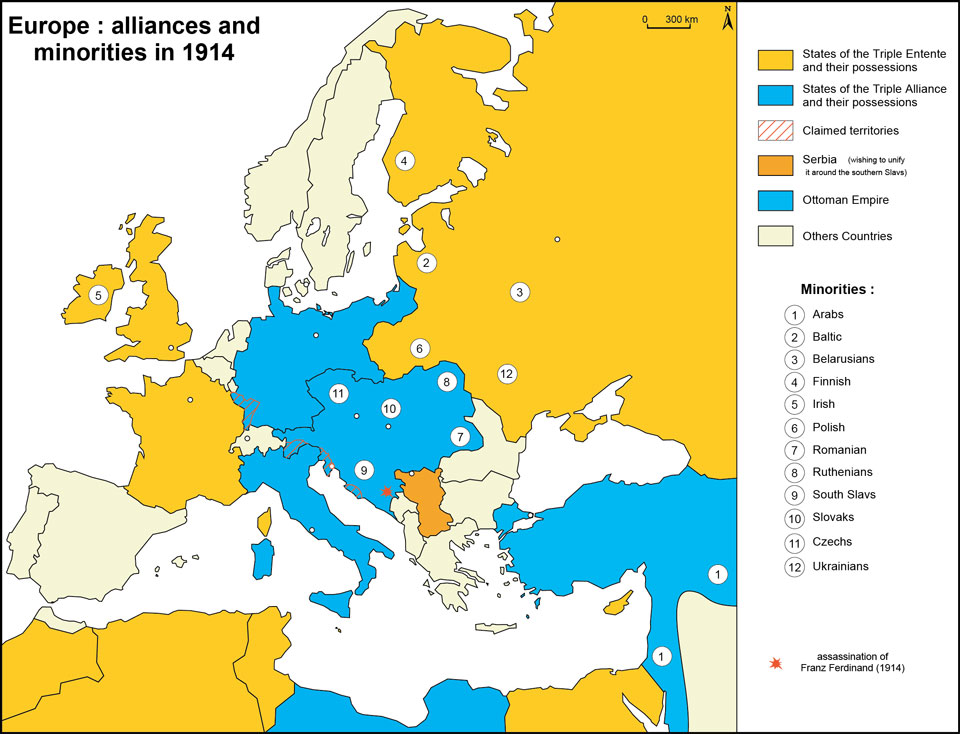World War 1 was fought in different parts of Europe, and in other parts of the world such as The Middle East and on the seas. From the records we have searched we have found that soldiers from St. James-the-Less fought, died and are buried in France, Germany and what is now Iraq. Many men from St. James-the-Less joined The East Lancashire Regiment that fought on ‘The Western Front’ in France. There were two main ‘fronts’ or battle lines during the war.
The two were:
- The Eastern Front, where one part of the German army fought the Russian army
- The Western Front where the British and French fought the Germans and their allies.
In autumn 1914 when the German’s army advance across France towards Paris was halted by the Allies, the two armies were in stalemate, which meant neither side was going forward, so both sides dug in and built trenches. The trenches of The Western Front went through the centre of France from North to South. The lines of battle in France hardly moved from late 1914 until 1917.

What were the trenches like?
The first trenches were very basic and not very deep. By the start of 1915 the trenches were better, deeper and stronger. They had redoubts or bunkers lined with timber and even concrete, offering the troops protection from artillery bombardment.
British trenches were meant to be seven feet deep. When piled sandbags were added they appeared deeper. By 1915 most British trenches had four parts:
- the front line was deep, lightly-manned trenches protected by barbed wire and parapets of sandbags
- a hundred yards behind this line was a second line, called the support trench, where men spent most time. The troops gathered in these trenches before an attack. The officers were in dugouts which like little rooms dug below the trenches; the ordinary soldiers rested in small holes dug in to the side of an existing trench, which they called ‘cubby holes’ or ‘funk holes’
- about 300 yards further back was the reserve trench, supposed to be a last line of defence if the front and support trenches were overrun by the Germans
- thin alleys called communication trenches ran across the three lines. The communication trenches were very busy. Messages to and from the front lines were sent via ‘runners’. They were also used by troops going ‘up the line’ to the front and by other others coming back. They were also used for evacuating the wounded and the daily routine of delivering to the front the post, newspapers, fresh food and drink and ammunition.
A strip of no-man’s-land separated the two sets of front line trenches. Sometimes the front lines were as close as 50 yards (45 metres), but in swampy areas the enemy lines were up to half a mile apart. At the height of the ward, the trench lines were 450 miles long and manned by millions of men. By the war’s end, there were over 12,000 miles of British trench lines.
What was life like for the soldiers from St-James-the-Less who, along with millions of other troops, fought in the trenches of The Western Front War?
Living and fighting in the trenches involved living with lice, illness and disease, and when the weather was bad, soldiers also suffered freezing cold, snow or rain and mud.
While in the trenches, death and injury from the enemy was also a constant threat: there was the menace of sniper fire, hand to hand fighting during raids into enemy trenches, poison gas, or shelling from heavy guns that could fire for miles.
But soldiers often spent more time waiting than fighting. In the front line when no fighting was taking place soldiers were sitting waiting for something to happen which led to another problem in the soldiers’ lives: boredom.
The soldiers in the front line trenches were not kept there for long periods and they were relieved by other troops and allowed to go behind the front lines to rest and sometimes go home on leave. Sometimes they were only on the front line for a few days at a time, or during heavy fighting a week or more. Regular leave and periods of rest helped the soldiers’ morale. Officers were given more leave than ordinary soldiers.
Another thing that helped soldiers’ morale was the opportunity for the soldiers to get clean in the time spent away from the front line. Troops washed in communal baths and their lice-infested clothing was steam-cleaned.
Another important factor for soldiers’ morale was their food. British soldiers had plenty of food, even it was a monotonous diet of the same things: some dishes were ‘sandbag duff’ (a stodge cooked in sandbags), cold bully beef and stew and bacon. This was useful because it could be quickly fried with little smoke to attract snipers. Food parcels sent from home or donated by charities could supplement the troops’ rations. The men could spend their wages on local food, tobacco, wine and beer. The working class soldiers developed the habit of smoking during the war. In periods when they had nothing to do, sharing cigarettes and chatting was one of their few pleasures.
What was the daily routine in the trenches?
In between battles the daily routine in the trenches typically began and ended with ‘stand to’, this was when the soldiers would fix bayonets and man the front lines in preparation for an attack. If no attack took place the men would ‘stand down’ and be served food.
Alcohol was generally reserved for officers whiskies, though a small drink of rum was served to men about to go over the top in an attack.
The time between dawn and dark was filled with many tasks to keep soldiers busy; these included, repairing parts of the trenches damaged by shellfire, draining flooded parts of the trenches or emptying the toilets! In their spare time the soldiers might clean their uniform, read or write letters. Read the letters written from the front line by a local soldier, Albert Hunt, a relative of one of our parishioners
At night, under the cover of darkness, duties included mending damaged barbed wire, laying new stretches of wire or raiding the enemy lines to take prisoners to find out information about the enemy’s battle plans.
However, sometimes in quiet periods, even though they were at war, an unofficial truce sometimes developed between the two sides. These ‘truces’ allowed both sides to collect their dead and wounded from no-man’s-land, as sometimes soldiers from both sides would lie dead or dying in no-man’s-land for days.

Leave A Comment